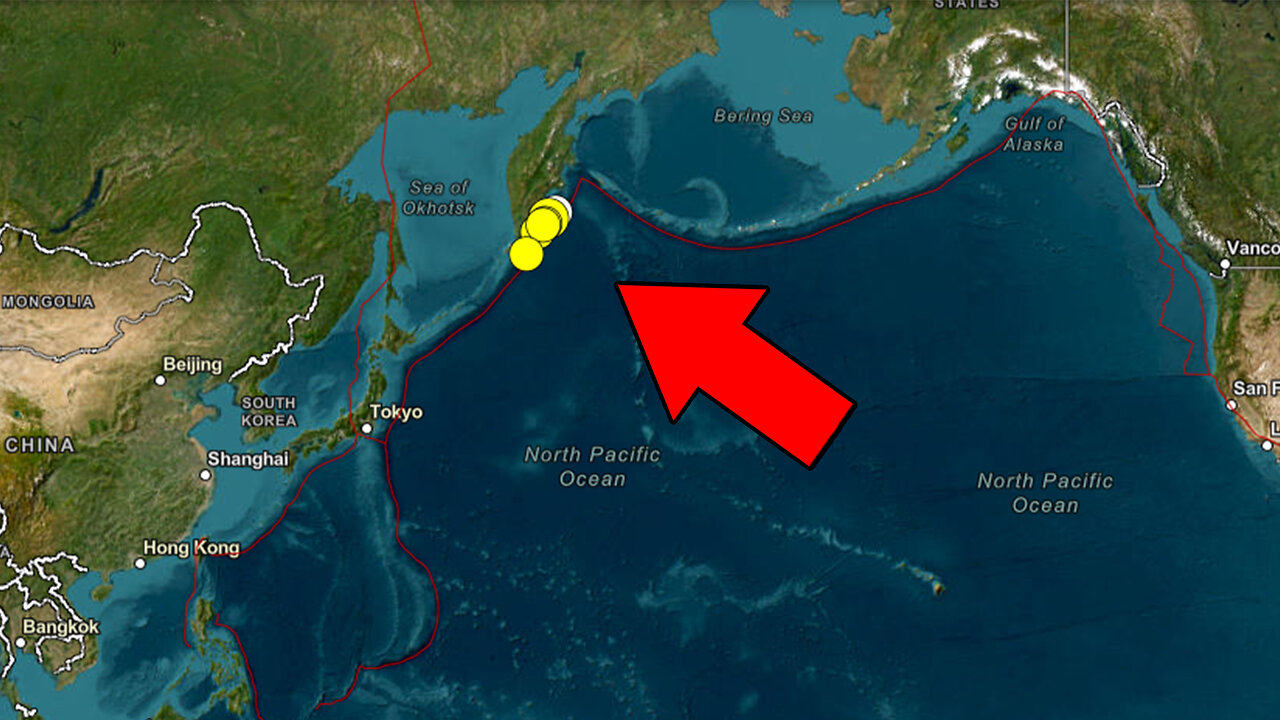Premium Only Content

Kamchatka in Turmoil: 7.8 Quake, 47 Aftershocks, and Volcano Eruption
The morning of September 19th in Kamchatka began with panic and alarm — at 6:58 a.m. local time, a powerful earthquake with a magnitude of 7.8 struck off the eastern coast of the peninsula. The epicenter was located in the Pacific Ocean, approximately 99 miles from the city of Petropavlovsk-Kamchatsky, and the focus was at a depth of about 30 miles.
The seismic event was felt not only by residents of the regional capital; tremors of the same intensity were experienced in Vilyuchinsk, and slightly weaker shaking was felt in the Yelizovsky District and the Ust-Kamchatsky area. People recalled that they were asleep when their homes literally “rocked” from side to side, and plaster fell from the walls. Eyewitnesses said that for the first time in thirty years of living in their houses, they heard the tiles cracking. Chandeliers swayed, doors slammed, and furniture moved from its place. Many ran out into the streets in a panic, still in their home clothes.
In Petropavlovsk-Kamchatsky, cracks appeared in the walls of schools, a kindergarten, and a swimming pool. At Yelizovo Airport, several flights were canceled or delayed.
Almost immediately after the earthquake, authorities issued a tsunami warning with possible wave heights of up to four feet, eleven inches, and residents were advised to stay away from the coast. A few hours later, the threat was lifted first for the Kuril Islands and then for Kamchatka, but residents were still asked to refrain from visiting the sea.
In less than twenty-four hours after the powerful seven point eight magnitude quake, forty-seven aftershocks of magnitude three point five and higher were recorded in Kamchatka, more than half of which were magnitude five or higher.
That same morning, the Shiveluch volcano erupted, sending a column of ash approximately 14,800 feet into the air, creating a threat to low-flying aircraft.
It is important to note that less than a week earlier, on September 13th, Kamchatka had experienced a sharp surge in seismic activity. In just one day, scientists recorded sixty-two earthquakes of magnitude 3.5 and above, eight of which were strong enough to be felt by residents.
The most powerful tremor, with a magnitude of 7.4, occurred seventy-six miles from Petropavlovsk-Kamchatsky at a depth of 29 miles. A temporary tsunami warning was issued, but no large waves followed.
For those afraid to return home, a temporary shelter in Petropavlovsk-Kamchatsky was reopened.
Seismologists were confident that the most powerful aftershock of the megaquake with a magnitude of eight point eight, which shook the peninsula on July 30th, had occurred on September 13th. However, the events of September 19th showed that nature had delivered a new, even stronger blow. According to the director of the Unified Geophysical Service of the Russian Academy of Sciences, the situation does not fit any existing laws describing the propagation of aftershocks.
Nevertheless, all of this is a natural process and has a much larger-scale origin. This is not simply a matter of increasing pressure between two tectonic plates, but the impact of a massive volume of magma — the Siberian magmatic plume — on the entire Siberian lithospheric plate.
For more details on the physics of the processes that caused the series of powerful earthquakes in Kamchatka, watch Dr. Egon Cholakian’s video: “Powerful Earthquake in Kamchatka. ALLATRA's Warning Came True”.
-
 6:01
6:01
ALLATRA
10 days agoFrom Floods to Fires: Jake Drumm Reveals the Real Key to Surviving Disasters
72 -
 3:35:57
3:35:57
SlantRock
4 hours agoBATTLEFIELD REDSEC/ MAYBE ARC RAIDERS AFTER
600 -
 LIVE
LIVE
Astral Doge Plays!
2 hours agoHyrule Warriors: Age of Imprisonment ~LIVE!~ Ganondorf Is a Jerk
59 watching -
 1:25:13
1:25:13
Kim Iversen
4 hours agoMKUltra Victims Are SUING — The CIA's Darkest Secret EXPOSED
88.9K55 -
 LIVE
LIVE
GritsGG
6 hours ago#1 Most Warzone Wins 4015+!
60 watching -
 16:30
16:30
Stephen Gardner
4 hours ago🚨OVAL OFFICE EXPOSES TRUMP TAKEOVER – FILIBUSTER NUKED!
17.5K28 -
 LIVE
LIVE
The Rabble Wrangler
16 hours agoThe Best in the West Dominates Battlefield
21 watching -
 LIVE
LIVE
cosmicvandenim
4 hours agoCOSMIC VAN DENIM
51 watching -
 1:34:03
1:34:03
Redacted News
4 hours agoBREAKING! CIA FURIOUS & EMERGENCY WHITE HOUSE MEETING - ISRAELI SPY CAUGHT MEETING WITH AMB HUCKABEE
128K118 -
 1:22:06
1:22:06
vivafrei
5 hours agoCFIA Goes After a REFUGE? Charlie Kirk Missing Evidence "Uncovered"? Democrats are Epostein Simps!
130K74